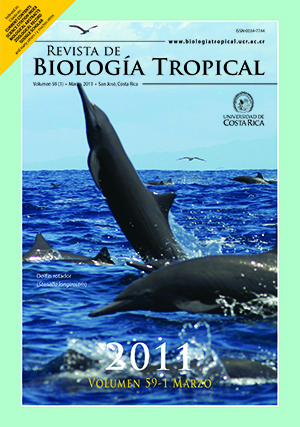Resumen
Growth is one of the key processes in the dynamic of exploited resources, since it provides part of the information required for structured population models. Growth of mangrove cockle, Anadara tuberculosa was estimated through length-based methods (ELEFAN I y NSLCA) and using diverse shell length intervals (SLI). The variability of L8, k and phi prime (F?) estimates and the effect of each sample were quantified by jackknife techniques. Results showed the same L8 estimates from ELEFAN I and NSLCA across each SLI used, and all L8 were within the expected range. On the contrary, k estimates differed between methods. Jackknife estimations uncovered the tendency of ELEFAN I to overestimate k with increases in SLI, and allowed the identification of differences in uncertainty (PE and CV) between both methods. The average values of F? derived from NSCLA1.5 and length-age sources were similar and corresponded to ranges reported by other authors. Estimates of L8, k and F? from NSCLA1.5 were 85.97mm, 0.124/year and 2.953 with jackknife and 86.36mm de L8, 0.110/year de k and 2.914 de F? without jackknife, respectively. Based on the observed evidence and according to the biology of the species, NSCLA is suggested to be used with jackknife and a SLI of 1.5mm as an ad hoc approach to estimate the growth parameters of mangrove cockle. Rev. Biol. Trop. 59 (1): 159-170. Epub 2011 March 01.##plugins.facebook.comentarios##

Esta obra está bajo una licencia internacional Creative Commons Atribución 4.0.
Derechos de autor 2011 Revista de Biología Tropical
Descargas
Los datos de descargas todavía no están disponibles.






